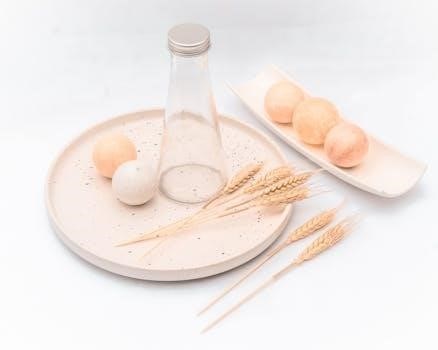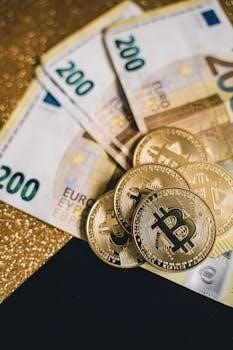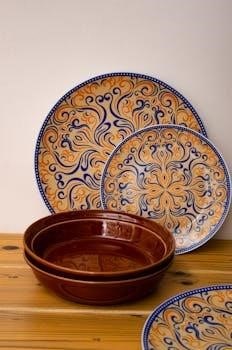
Australian coin collecting offers a fascinating glimpse into the nation’s history and culture. This hobby attracts diverse individuals, captivated by the artistry and stories behind each coin. Many are drawn to the potential for financial gain as well as the historical significance.
Overview of Australian Coinage
Australian coinage has a rich history, evolving from colonial times to the modern decimal system. Early coins included various denominations, often reflecting British influence. Pre-decimal coins, such as pennies, shillings, and florins, hold significant historical value and are highly sought after by collectors. The introduction of decimal currency in 1966 marked a significant shift, with the familiar dollar and cent system. This transition brought about new designs and materials, reflecting Australia’s evolving identity. Commemorative coins have also become a popular aspect of Australian coinage, celebrating national events, figures, and milestones. These diverse releases provide a wide range of collecting opportunities for both novices and seasoned numismatists. The Royal Australian Mint plays a pivotal role in the production and distribution of these coins, ensuring quality and consistency.

Understanding Coin Values
Determining the value of Australian coins involves several factors, beyond just their face value. Understanding these elements is crucial for both collectors and those curious about their loose change. Rarity and condition play a crucial role.
Factors Influencing Coin Value
Several key elements determine the worth of an Australian coin, moving beyond its simple denomination. The mintage year and the number of coins produced significantly impact value; lower mintage figures often translate to higher worth. The coin’s condition, graded using established numismatic standards, is paramount, with pristine specimens commanding premium prices. Any errors during the minting process can also drastically increase value, making these anomalies highly sought after. Furthermore, historical context and demand within the collector community play crucial roles, as certain periods or designs may have greater desirability. Material composition, while less influential for modern coins, can affect the value of older, pre-decimal issues made from silver or gold. Finally, the presence of any unique features, such as a color enhancement or a rare variety, contribute to the overall market value of an Australian coin.
How to Determine Coin Value
Determining the value of an Australian coin requires a multi-faceted approach, combining research and observation. Begin by identifying the coin’s denomination, year of issue, and any mint marks. Consult reputable coin catalogues or online resources that provide pricing guides, keeping in mind that these values are often indicative and can fluctuate. Closely examine the coin’s condition, noting any wear, scratches, or damage; this assessment significantly affects its grade and subsequent value. Look for any unique features, such as errors in minting or variations in design, which can greatly increase worth. Compare your coin with images online to confirm its authenticity and to identify any specific characteristics. Consider the current market demand for that particular coin, as highly sought-after issues will command higher prices. Finally, if you have a particularly rare or valuable coin, seek an expert opinion from a numismatic professional for a more precise valuation.

Rare Australian Coins
Australia boasts a selection of rare coins highly coveted by collectors. These pieces often feature low mintages, errors, or unique designs. Discovering such a coin can be exciting, potentially leading to a significant find.
List of Notable Rare Coins
Several Australian coins stand out for their rarity and value. The 1930 Penny, especially in proof condition, is often considered the most sought-after, commanding incredibly high prices; The 1920 Pattern Star Florin and Shilling also fall into the category of extremely rare and valuable coins. Other notable mentions include some of the early Australian sovereigns, particularly those from 1920. Coins with errors, such as mis-strikes or those with unique variations, can also be very valuable. The 1988 HH and 1989 HH 2-dollar coins are circulation finds that have fuelled interest in collecting. Additionally, some of the early pre-decimal coins and those with low mintage figures are worth keeping an eye out for.
1930 Penny⁚ The King of Rare Australian Coins
The 1930 Penny holds a legendary status among Australian coin collectors, often referred to as the “King” of rare Australian coins. While a small number were struck for proof sets, very few were released into general circulation, making it incredibly scarce. Its high value stems from its limited mintage and the resulting demand from collectors. A proof 1930 Penny sold for over a million dollars, demonstrating its exceptional desirability. The coin’s history and mystique contribute to its allure, making it a prized possession for those lucky enough to own one. The 1930 Penny exemplifies the potential value and excitement associated with collecting rare Australian coins, highlighting why many search for it in collections.
Low Mintage Coins to Look For
Beyond the famed 1930 Penny, numerous other Australian coins with low mintages are highly sought after by collectors. These coins, often produced in limited numbers due to various factors, can be surprisingly valuable. Identifying these requires a keen eye and a good understanding of mintage figures. Certain years within the pre-decimal and decimal series have significantly lower production runs, making them prime targets for collectors. For example, some 1920s shillings and florins, and specific 20 cent pieces, are known for their scarcity. Even seemingly common coins can have valuable variations, due to printing errors or other production anomalies. The thrill of discovering a low mintage coin in circulation or an old collection makes this a fun and rewarding part of collecting. Knowing which coins to watch out for is key.

Australian Coins List and Value PDF
A PDF resource listing Australian coins and their values is an invaluable tool for collectors. These PDFs provide a comprehensive guide, often including images, mintage figures, and current market values, aiding both beginners and experienced collectors.
Availability of PDF Resources
Numerous online platforms offer downloadable PDF resources dedicated to Australian coin lists and values. These resources vary in scope and depth, catering to different levels of collector expertise. Some are freely available, often provided by numismatic societies or coin dealers, while others might require a purchase or subscription. The content of these PDFs typically includes detailed listings of circulated and uncirculated coins, encompassing pre-decimal and decimal currency. Many resources also include high-quality images, mintage figures, and information about variations or errors that can impact a coin’s value. It’s crucial to verify the source and publication date of these PDFs to ensure the information is accurate and up-to-date, as coin values can fluctuate. Furthermore, specific PDF resources may focus on particular coin series, eras, or types, allowing collectors to target their research. Some also contain grading guides and market insights.
What to Expect in a Coin Value PDF
A typical Australian coin value PDF will provide a comprehensive list of coins, often organized by denomination and year of issue. Expect to find details like the coin’s official name, its composition (metal type), and the mint where it was produced. The core of the PDF will be the estimated values for each coin, usually presented in different grades of condition, from poor to uncirculated. These values are often based on market research and recent sales data. In addition to values, many PDFs include high-quality images of the coins, which aid in identification. You might also find mintage figures, which indicate how many coins of that type were produced, as well as details about any known varieties or errors that can significantly increase a coin’s worth. Some PDFs also offer information about historical context, design features, and other relevant facts for collectors.
Downloading and Using Coin Lists
Downloading a coin list, often in PDF format, is usually a straightforward process. Most reputable websites will provide a direct download link or a button. After downloading, it’s advisable to save the file in an easily accessible location on your computer or device. Opening the PDF will require a PDF reader application. Once you have opened the list, you can use it to identify coins you already own, or to learn about potential additions to your collection. Refer to the detailed descriptions and images provided, comparing them to your coins. Pay close attention to the condition grading, and use this as a guide when assessing the value of your own coins. Coin lists are also helpful for tracking your existing collection, and for identifying coins you may want to look for, whether in change or at coin shows. Regular consultation of your list will help you stay informed about the Australian coin market.

Additional Resources
For further exploration, numerous numismatic associations in Australia offer support. There are also many physical and online venues where collectors can buy, sell, and learn more about Australian coins. These resources are invaluable for collectors.
Numismatic Associations in Australia
Australia boasts several prominent numismatic associations that cater to both seasoned collectors and newcomers to the hobby. These organizations play a vital role in promoting the study and appreciation of coins and other forms of currency. The Numismatic Association of Australia (NAA), for instance, publishes a highly regarded journal covering various aspects of currency and medals. They also host biennial conferences that bring together enthusiasts and experts from around the globe. These conferences often feature papers and presentations that advance knowledge in the field.
Furthermore, the Australasian Numismatic Dealers Association (ANDA) represents a network of professionals, including dealers and businesses, in Australia and New Zealand. ANDA’s membership comprises individuals and businesses. These associations collectively enhance the collecting experience by providing resources, promoting best practices, and fostering a vibrant community for enthusiasts. They offer a place to connect with others, learn from experts, and engage with the world of numismatics.
Where to Buy and Sell Australian Coins
Navigating the market for Australian coins requires understanding the various avenues available for buying and selling. For those looking to acquire new pieces, established coin dealers, both physical and online, are a primary resource. These dealers often possess extensive inventories, offering a range of coins from common circulating issues to rare and highly sought-after items. Reputable dealers can also provide expert advice on grading and valuation.
Online marketplaces and auction sites represent another popular option, providing a wide selection of coins at various price points. However, it’s crucial to exercise caution and due diligence when purchasing through these platforms, ensuring the authenticity of the coin and the trustworthiness of the seller. For those looking to sell their collections, auction houses, coin dealers, and online forums can offer avenues for reaching potential buyers. Connecting with other collectors through numismatic associations can provide insights into the best channels for buying and selling, fostering a more informed and enjoyable collecting experience.